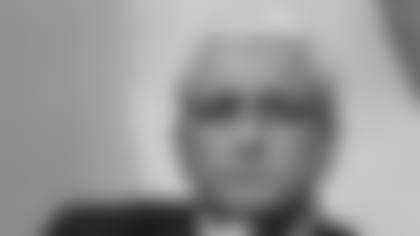Modell lived much of the NFL's history. He didn't just know about Vince Lombardi. He worked alongside the legendary coach to complete the league's first collective bargaining agreement. He didn't just appreciate the powerful blending of the NFL and television, he negotiated, along with Pete Rozelle, the first network TV contracts. The template from those contracts serves as the base for the NFL's financial success.
Art vacationed with George Halas, stood up for a falsely-accused Ray Lewis, and used every resource he could muster to help the dying Ernie Davis (Syracuse). Hall of Famer Shannon Sharpe, who was on the Ravens' Super Bowl XXXV championship team, said: "Art talked with me every day when I played in Baltimore. He knew everything about what was going on in my life. He showed real concern. But, it wasn't just me. He knew the practice squad players' names. He treated them the same. He was out at practice when it was 100 degrees and when the December snows came. I loved playing for him."
Modell expected the highest level of effort from his associates, but he always applied his noted sense of humor. "Art wanted to know everything we were doing, and he directed us every day. He was demanding, but he made me laugh and smile at the same time. The tougher the situation, the better his humor," Ozzie Newsome, whom Modell named as the first minority general manager in the NFL, said.
Fellow NFL owners had great respect for Modell and surprised him with a salute at a league meeting in 1990 with this proclamation: "The league has always had its share of special people. They have been the founders, owners, officials and coaches who have stayed the course over long periods of years, and who have made special contributions to the welfare of the league and its members. Art, you are one of those special people."
Modell, who purchased the Cleveland Browns for what was then an unprecedented price ($4 million in 1961), brought the NFL back to Baltimore on Feb. 9, 1996. It was not an easy move to make for the proud Modell, but he did not leave the fans of Cleveland empty handed. He left the name "Browns," the team colors and the great Browns' history. "That didn't happen in Baltimore with the Colts, in Brooklyn with the Dodgers, or in other cities that lost sports teams," Modell explained at the time.
Modell was a fervent philanthropist, donating and raising millions for many civic and charitable causes after purchasing the Browns. He served on multiple civic, educational and charitable boards, but he was devoted to aiding those in need of medical care and helping institutions raise money to better good health. For 20 years, he served on the board of the famed Cleveland Clinic, serving seven (1988-1995) years as president. Recently, Art headed a $100 million Heart Institute Fund for the equally renowned Johns Hopkins Medicine. He and his wife Pat's devotion and generosity to the arts is noted with the Patricia and Arthur Modell Performing Arts Center in downtown Baltimore.





















